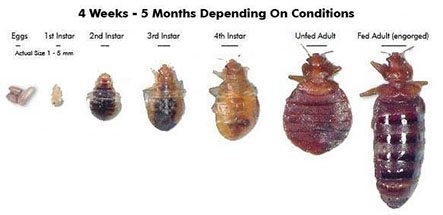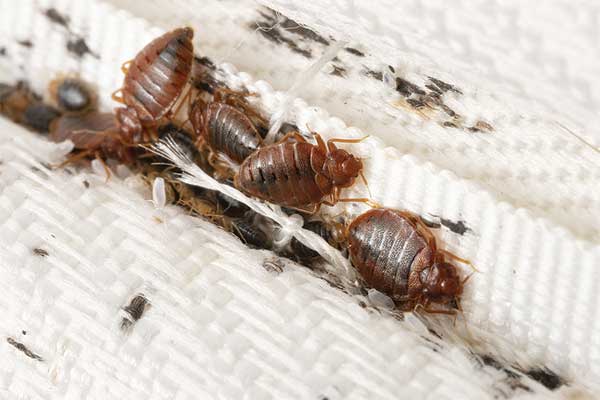What are Bed Bugs?
In the initial egg stage, bed bugs look like a curved, whitish-clear grain of salt. The eggs hatch small, just 1/25”, and remain light-colored at first, then get darker and bigger with each blood meal. During the 5th instar stage, the dark center is the blood meal being digested and ready to be excreted. If a blood host is available, bed bugs can live to see three generations of offspring ready to prey on their human hosts. Females deposit three to eight eggs at a time, for a total of 200-500 eggs in their lifetime. The eggs are often deposited in clusters and attached to cracks, crevices, or rough surfaces near adult harborages, with a sticky epoxy-like substance. Adults can live without feeding for several months (in some reports, for more than 1 year), and nymphs, for at least 3 months.
The classic signs of bed bug infestations are itchy, reddish-colored bites, dark fecal spotting on mattresses, blood smears, adult bugs, molts of the shell that are left behind, small bed bugs, and tiny, whitish-colored eggs.
How To Prevent Bed Bugs






